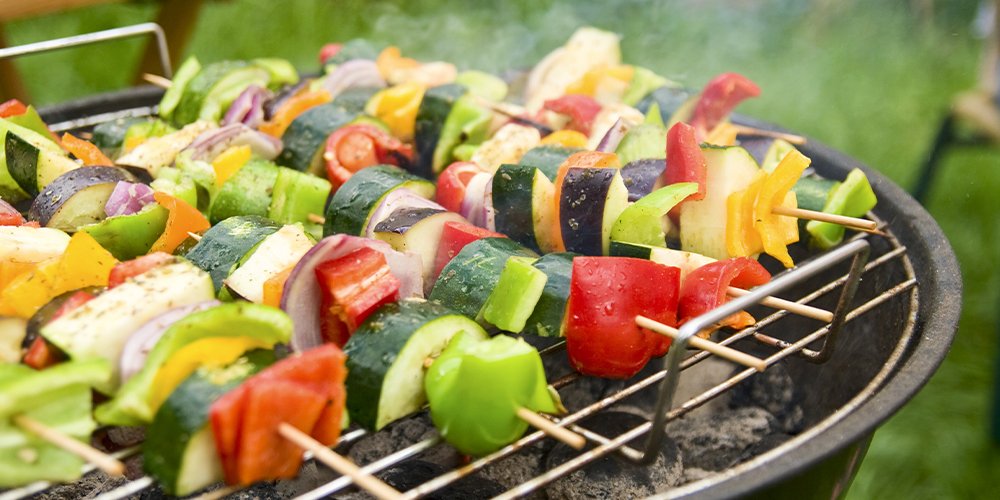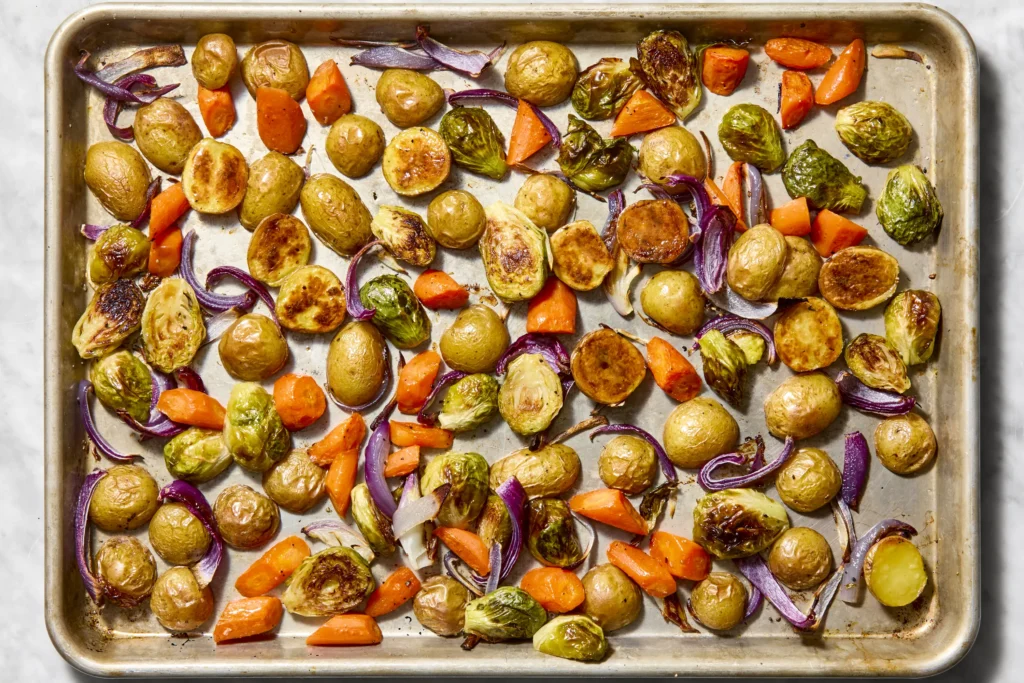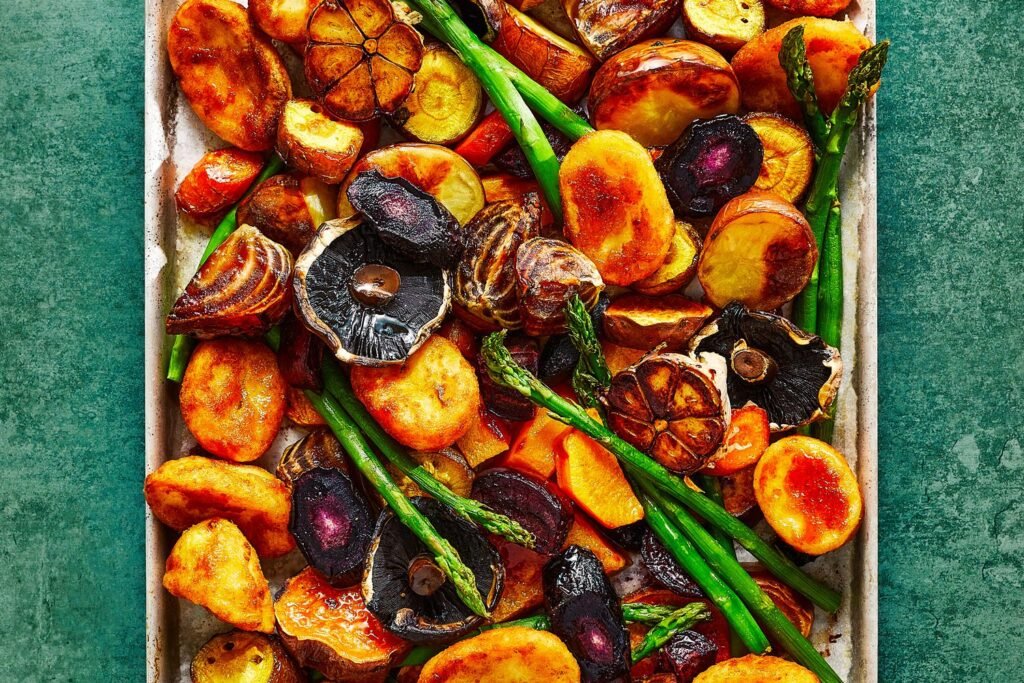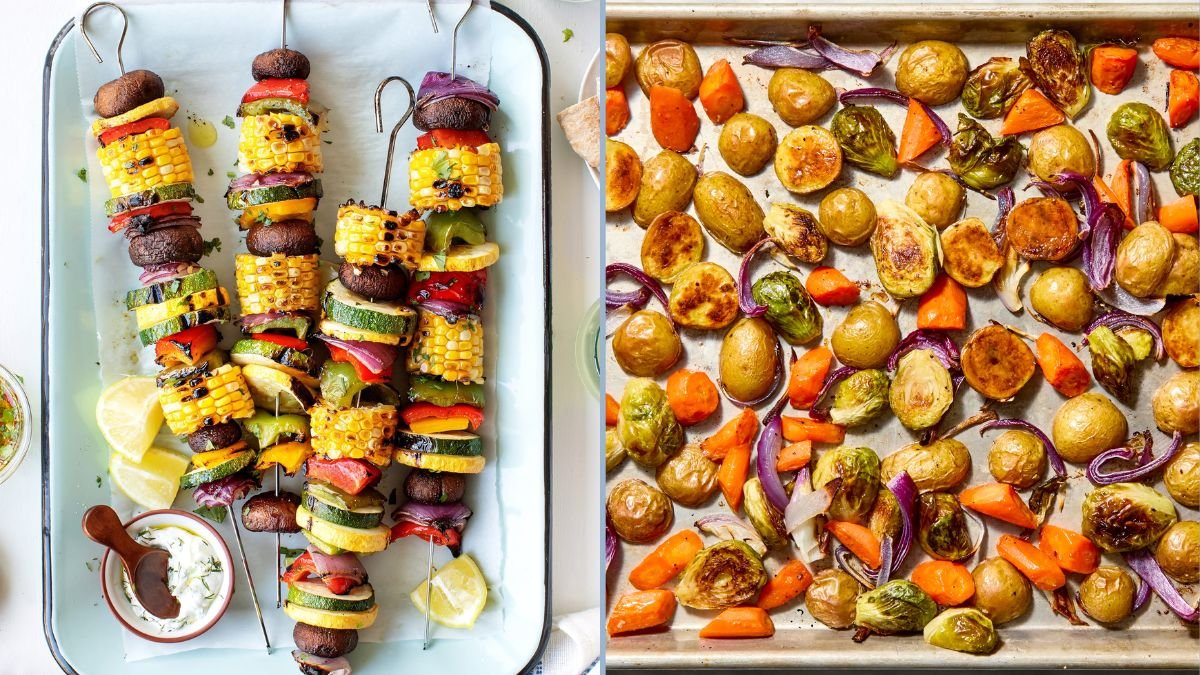Roasted vegetables are one of the simplest, most satisfying ways to enjoy plant-based foods. Their natural sweetness intensifies, edges caramelize, and textures range from tender to crisp, making them a versatile addition to any meal. Despite their apparent simplicity, perfectly roasted vegetables require attention to technique, seasoning, and timing. When done right, they become not only a nutritious side dish but also the star of bowls, salads, pastas, and grain dishes. In this article, we’ll explore how to roast vegetables perfectly every time, along with tips for flavor, nutrition, and presentation—all within a vegetarian and plant-based framework.
Why Roasting Vegetables Is So Beneficial

Roasting vegetables offers more than just flavor; it enhances both nutritional value and digestibility:
1. Concentrates Natural Flavors
Heat caramelizes the sugars in vegetables, creating rich, deep flavors without needing heavy sauces or excessive fat. This makes roasted vegetables naturally sweet and savory, appealing even to picky eaters.
2. Preserves Nutrients
While boiling or overcooking vegetables can leach water-soluble vitamins, roasting at moderate temperatures preserves vitamins and minerals such as vitamin C, potassium, magnesium, and B-vitamins.
3. Increases Digestibility
Roasting breaks down cell walls in vegetables, making them easier to digest and enhancing nutrient absorption, especially for compounds like beta-carotene in carrots and sweet potatoes.
4. Encourages Plant-Based Eating
Flavorful roasted vegetables are versatile, satisfying, and visually appealing, encouraging more plant-based meals in your diet. They work as a main dish, side, or salad topping, increasing your daily intake of fiber, antioxidants, and phytonutrients.
Choosing the Right Vegetables

Almost any vegetable can be roasted, but understanding their cooking times and textures is key to perfection.
1. Root Vegetables
- Examples: Carrots, sweet potatoes, parsnips, beets, turnips.
- Characteristics: Dense, naturally sweet, benefit from longer roasting times (35–45 minutes at 400°F/200°C).
2. Cruciferous Vegetables
- Examples: Broccoli, cauliflower, Brussels sprouts.
- Characteristics: Roasts quickly, develops nutty, slightly charred flavor. Typically 20–25 minutes at 425°F/220°C.
3. Softer Vegetables
- Examples: Zucchini, bell peppers, tomatoes, mushrooms.
- Characteristics: Cook quickly, often in 15–20 minutes. High water content may require slightly higher heat or spacing to avoid steaming.
4. Alliums and Aromatics
- Examples: Onions, garlic, leeks.
- Characteristics: Caramelize beautifully when sliced or halved. Roasting whole garlic cloves adds mellow sweetness and makes a perfect spread.
Prepping Vegetables for Roasting

Preparation is crucial for even cooking and optimal flavor:
1. Wash and Dry
- Wash vegetables thoroughly.
- Dry completely to prevent steaming instead of roasting.
2. Cut Uniformly
- Cut vegetables into similar sizes for even cooking.
- Larger pieces retain moisture; smaller pieces caramelize faster.
3. Toss with Oil and Seasonings
- Use olive oil or other plant-based oils to coat vegetables lightly.
- Season with salt, pepper, herbs, and spices. Common additions: garlic powder, paprika, cumin, rosemary, thyme, or chili flakes.
4. Consider Acid or Sweeteners
- A splash of lemon juice or balsamic vinegar brightens flavors.
- A drizzle of maple syrup or agave can enhance natural sweetness in root vegetables.
Roasting Techniques for Perfection

1. Choose the Right Pan
- Use a large, shallow baking sheet for even heat distribution.
- Avoid overcrowding; vegetables need space to roast rather than steam.
2. Preheat the Oven
- Preheat to 400–425°F (200–220°C) for most vegetables.
- High heat promotes caramelization and crisp edges.
3. Stir and Flip
- Stir halfway through cooking to ensure even browning.
- Use a spatula to turn pieces gently without smashing them.
4. Adjust Timing Based on Vegetable Type
- Dense root vegetables: 35–45 minutes.
- Cruciferous vegetables: 20–25 minutes.
- Soft vegetables: 15–20 minutes.
- Use a fork to check tenderness without overcooking.
5. Layering for Mixed Roasts
- Add faster-cooking vegetables later in the roasting process or place separately on another tray.
- Group vegetables by size and density to achieve uniform cooking.
Flavor Boosting Techniques

Roasted vegetables can be deliciously enhanced without heavy sauces:
1. Herbs and Spices
- Fresh herbs like rosemary, thyme, oregano, or basil add aroma.
- Dried spices like smoked paprika, cumin, or turmeric introduce warmth and depth.
2. Aromatics
- Add garlic cloves, shallots, or leeks to the roasting tray for a subtle background flavor.
- Sliced onions caramelize beautifully, adding natural sweetness.
3. Finishing Touches
- Drizzle with balsamic glaze, tahini, or a squeeze of lemon for brightness.
- Sprinkle with toasted seeds (pumpkin, sesame, sunflower) or nuts (almonds, walnuts) for texture.
- Add fresh herbs or microgreens just before serving for visual appeal and flavor.
Creative Roasted Vegetable Combinations
Here are a few ideas to inspire your next roast:
- Mediterranean Mix: Bell peppers, zucchini, cherry tomatoes, red onion, olive oil, oregano, and garlic.
- Root Veggie Medley: Carrots, parsnips, sweet potatoes, beets, rosemary, and a touch of maple syrup.
- Cruciferous Crunch: Brussels sprouts, broccoli, cauliflower, olive oil, smoked paprika, and lemon zest.
- Autumn Harvest: Butternut squash, carrots, onions, garlic, sage, and a sprinkle of nutmeg.
- Mushroom Delight: Cremini or portobello mushrooms, garlic, thyme, and a dash of balsamic vinegar.
Roasted Vegetables as a Meal
Roasted vegetables can serve as the centerpiece of a meal or complement other dishes:
- Grain Bowls: Pair with quinoa, brown rice, or farro, and add beans or tofu for protein.
- Salads: Use roasted vegetables as a topping for mixed greens or kale salads.
- Pasta: Toss roasted vegetables with whole-wheat pasta, olive oil, and fresh herbs.
- Sandwiches and Wraps: Add roasted peppers, zucchini, or eggplant to sandwiches or wraps.
- Soups and Stews: Blend roasted vegetables for creamy, flavorful soups.
Meal Prep and Storage Tips
- Roast in large batches for easy meal prep.
- Store in airtight containers in the fridge for up to 4–5 days.
- Reheat in the oven or air fryer to maintain crisp edges.
- Freeze roasted vegetables for up to 2 months; reheat gently to preserve texture.
Health Benefits Recap
- Nutrient-Dense: Rich in vitamins, minerals, fiber, and antioxidants.
- Supports Heart Health: Olive oil and vegetables provide healthy fats and anti-inflammatory compounds.
- Aids Digestion: Fiber-rich vegetables promote a healthy gut.
- Enhances Satiety: Roasted vegetables are filling, making them excellent for weight management.
- Encourages Plant-Based Eating: Versatile, visually appealing, and flavorful options make vegetables more enjoyable.
Conclusion
Roasting vegetables transforms simple ingredients into dishes bursting with flavor, texture, and nutrients. By understanding cooking times, using the right pan and temperature, and incorporating herbs, spices, and finishing touches, you can achieve perfectly roasted vegetables every time.
Whether served as a side dish, tossed into a grain bowl, or blended into a soup, roasted vegetables are a versatile, plant-based cornerstone of a healthy diet. They support heart health, aid digestion, and provide essential vitamins and minerals while delighting the senses with caramelized sweetness and aromatic depth.
Embrace roasting as a simple yet transformative cooking method. With practice, attention to detail, and creative seasoning, you can elevate everyday vegetables into dishes worthy of any meal. Perfectly roasted vegetables not only taste amazing—they also nourish your body, support a plant-based lifestyle, and make healthy eating a delicious, satisfying experience.
